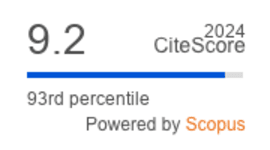Role of SarA in Staphylococcus aureus: A Virulence Target For Therapeutic Strategies
DOI:
https://doi.org/10.36877/pmmb.a0000444Abstract
Methicillin-resistant Staphylococcus aureus (MRSA) infection gives rise to significant morbidity and carries a grave prognosis, resulting in the demise of approximately 21.8% of afflicted individuals on a yearly basis Staphylococcus aureus has the capability to induce a myriad of diverse diseases, a phenomenon attributed to its extensive array of virulence factors and formation of biofilms. The regulation of key virulence determinants, crucial for pathogenicity, is intricately controlled by the staphylococcal accessory regulatory (sarA) system. SarA plays a crucial role in the pathogenic mechanisms of S. aureus and the development of biofilms, while simultaneously modulating the synthesis of multiple virulence factors and influencing the expression of specific colonization determinants, and mutations in sarA partially limit the extent of S. aureus biofilms formation. In this review, we present an overview of the current understanding of the molecular mechanisms underlying the regulation of sarA gene expression, with a particular emphasis on its relevance in the development and sustenance of antimicrobial resistance, along with in the processes of biofilm formation and activation of virulence genes in MRSA. This review demonstrated that suppressing the expression of sarA gene exerts a notable impact on both biofilm development and the pathogenicity of MRSA strains, thereby offering a hopeful approach to the efficient management and treatment of MRSA infections.
Downloads
Published
How to Cite
Issue
Section
License
Copyright (c) 2024 Yi He Kuai, Jodi Woan-Fei Law, Yong Sze Ong, Vengadesh Letchumanan, Learn-Han Lee, Loh Teng-Hern Tan

This work is licensed under a Creative Commons Attribution-NonCommercial 4.0 International License.
Author(s) shall retain the copyright of their work and grant the Journal/Publisher right for the first publication with the work simultaneously licensed under:
Creative Commons Attribution-NonCommercial 4.0 International (CC BY-NC 4.0). This license allows for the copying, distribution and transmission of the work, provided the correct attribution of the original creator is stated. Adaptation and remixing are also permitted.

This broad license intends to facilitate free access to, as well as the unrestricted reuse of, original works of all types for non-commercial purposes.
The author(s) permits HH Publisher to publish this article that has not been submitted elsewhere.



.png)

.jpg)
